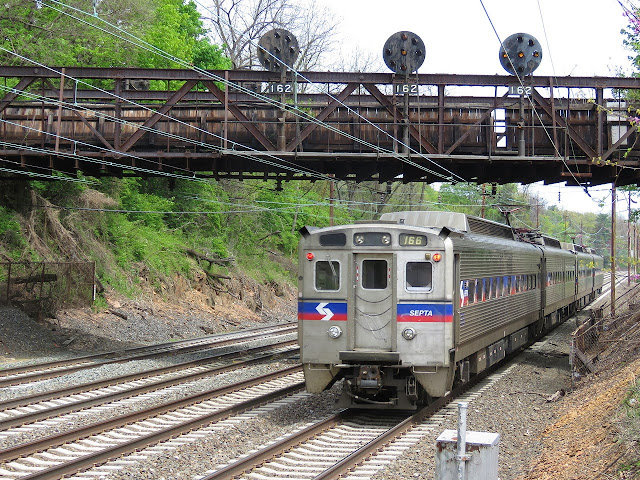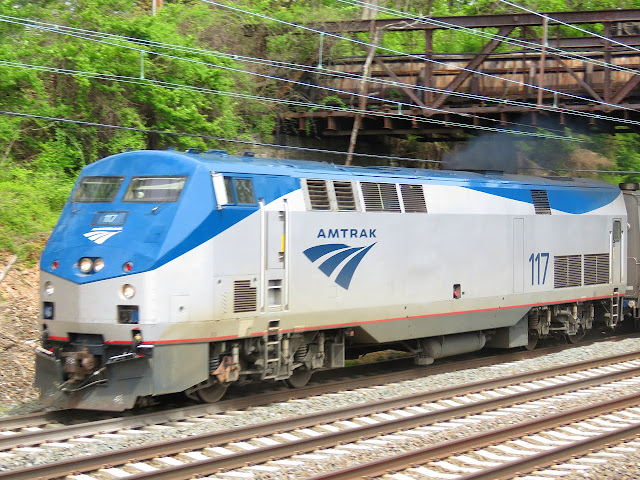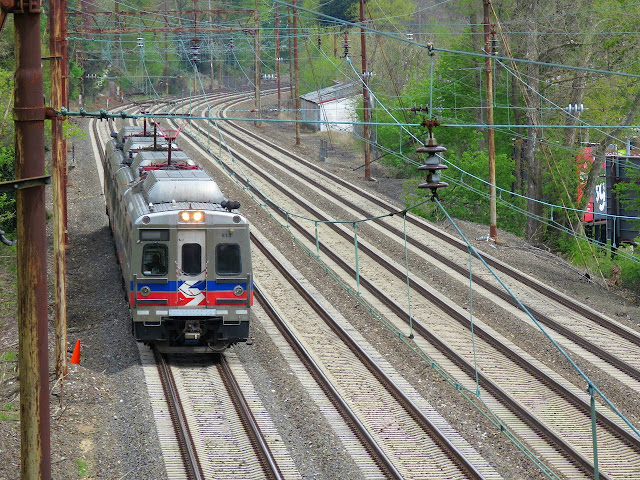The next point of focus on my PRR Main Line tour are the stations of Devon and Wayne, 16 and 14 miles from Suburban Station respectively. Each location plays host to a classic PRR signal bridge still in a 1940's vintage configuration along with all of the other Main Line accoutrements such as victorian station buildings, a 4 track main line with 1915 overhead catenary and a mix of SEPTA and Amtrak services. You can find the full gallery of photos here ( mirror ).
The Devon station is typical of those seen on the Main Line, an ornate Victorian building made from high quality materials like brownstone. The railroad turned the towns along it into bastions of wealth that could use the new transportation artery to escape the dirty urban hellscape and live in more natural settings.
A barely missed a meet between the westbound Train 43 and an eastbound Keystone train fronted by Metroliner Cab Car #9635 and propelled by ACS-86 #646. Just after the keystone passes the Milepost 16 signal on track #1 finally changes from Stop and Proceed to Approach.
The post-covid weekend SEPTA schedule hobbled the line with bi-hourly service. For good or for ill inbound and outbound trains would appear about the same time and I was soon treated to an outbound train of Silverliner V's with #814 in the lead and #704 on the end.
The 1915 Paoli electrification was fed by four 44kv single phase feeder circuits that would be stepped down to 12kv for the overhead catenary at substations. As freight traffic disappeared from the line in the 1960's and 70's and the 1915 electrification infrastructure aged, the 44kv system was retired with the PRR opting to feed the line from Substations at Paoli and Zoo. However 2 pairs of 44kv lines were leased to the Philadelphia Electric Company as a medium voltage supply for main line communities that were generally against unsightly infrastructure.
Amtrak's eastbound Pennsylvanian Train #44 with P42DC #125 leading under the Milepost 14 intermediate signals. Note the westbound direction only has two sets of signals instead of 3 as only track #3 is bi-directional. The bi-directional track makes use of manual traffic control (aka dirrection) levers in the towers at PAOLI and OVERBROOK.
Because of the reduced schedule that was pretty much it for trains. Next week I head to New York City to pick up someone from the airport by way of of the new Penn Station train hall.














No comments:
Post a Comment